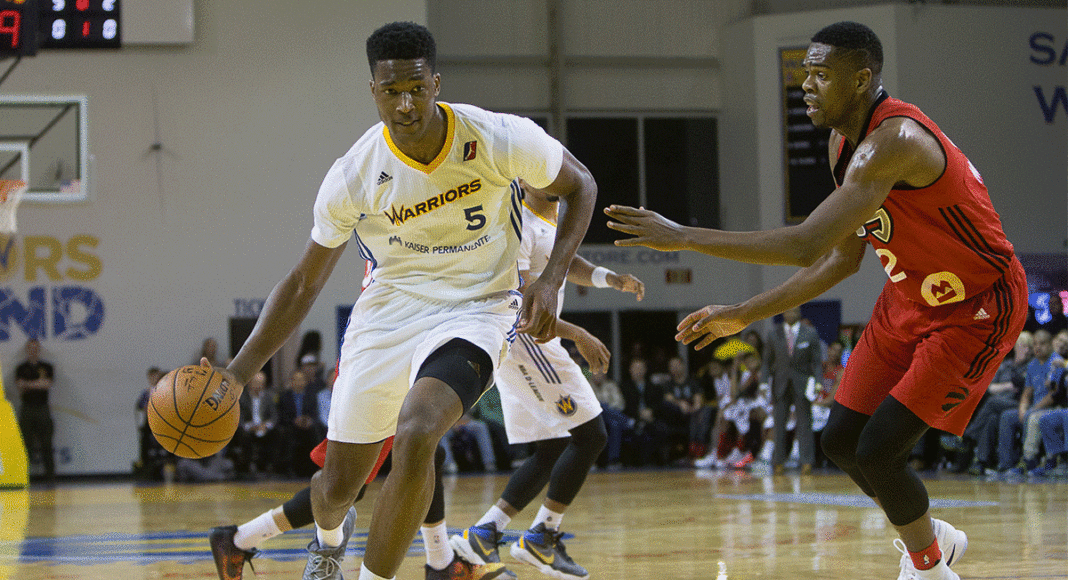“What are you talking about?”
“I don’t know. Coach was yelling something about—”
“It’s too loud in here, mostly because I’m yelling!”
On the streaming video, the Oklahoma City Blue’s two broadcasters were breaking down a play in the team’s D-League game against the Santa Cruz Warriors. Or at least trying to.
This Facebook Live feed was the only way to watch Monday night’s game, which was played in Oklahoma. Typically, a game has two announcers—a color commentator and a play-by-play one. But this game’s analysts clearly came from a different school of communications, as they repeatedly asked each other what was happening, leaned over to check in with the coaches and nervously criticized each other’s choice of words. The Cox Convention Center, where the Blue play, is a hockey arena built in the ’70s that seats close to 14,000, but looks like it has about 400 guests for the playoff game.
The Warriors got off to a hot start, as they often have lately, going up 29-16 in the first quarter, thanks to beautiful passing, limited mistakes, smart defense, and some wild shots finding their way into the hoop.
But that lead slipped away (another recurring theme), giving way to a competitive back-and-forth battle, until a fourth-quarter collapse left Santa Cruz with a 124-104 loss and the revelation that it had been eliminated from the playoffs. Now change is on the way.
In the D-League, every year is a rebuilding year, as rules restrict how many players a team can keep from the previous season. And athletes frustrated by the pay often try their hands playing overseas.
Both player consistency and pay may see an upswing next year, though, as the NBA’s collective bargaining agreement will create two-way players, who will make $50,000-$70,000 a year—about twice what traditional D-League players make—and bounce back and forth between the two leagues. It’s all part of the D-league’s growing reputation.
The second-tier organization is slowly adding a few teams each year, and the league announced it would rebrand as the Gatorade League next season—a rather brazen corporate sellout, but maybe it’ll lead to better compensation. (The switch also makes us feel bad about how, two years ago, we mocked the Warriors for adding sponsorship from the local company PayStand to its jerseys, an experiment that, comparatively, doesn’t look so bad these days.)
For an organization where executives pride themselves on fostering an environment that’s the “closest thing” to the NBA, part of the charm is that this lower-budget league is still different. The Blue’s bumbling commentators harken back to a time when professional sports were just a little less, er—professional … before $140 million contracts or even first-class flights, or announcers who are practically movie stars. When the only thing that mattered more than the game itself was just how much everyone loved it.














Very shortly this website will be famous among all blog visitors, due to it’s good articles or reviews|